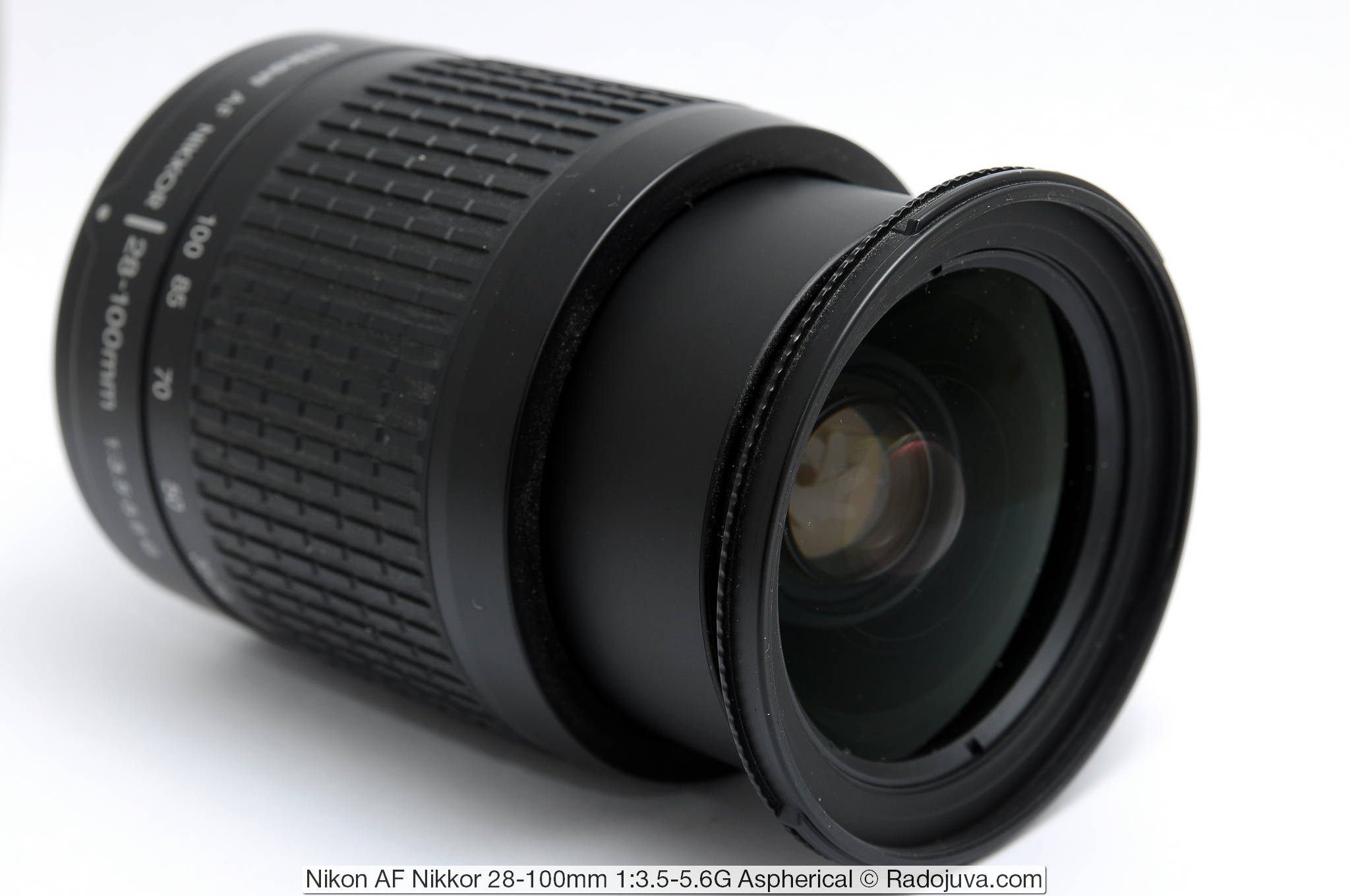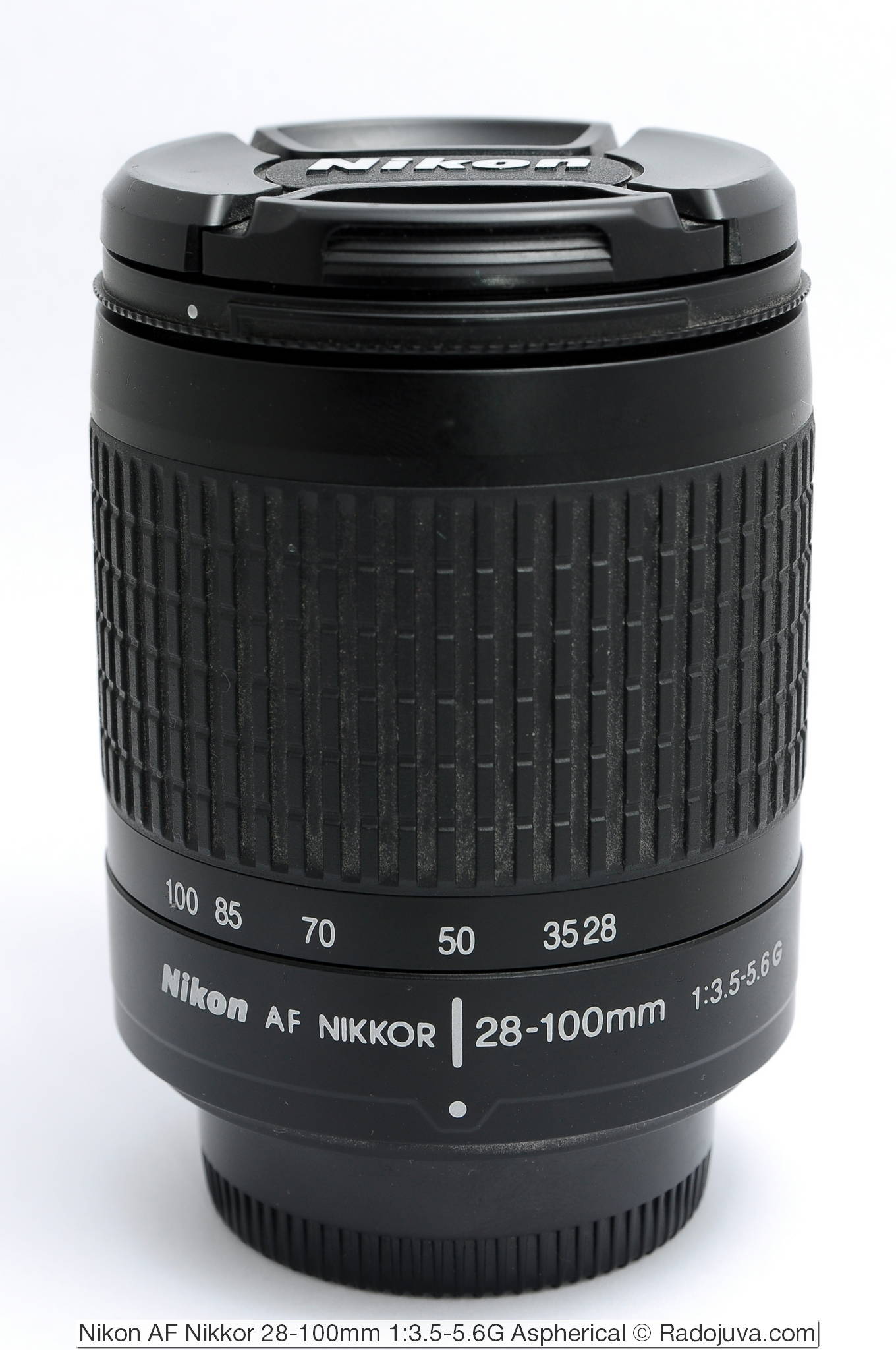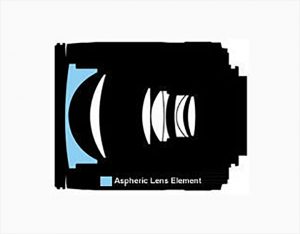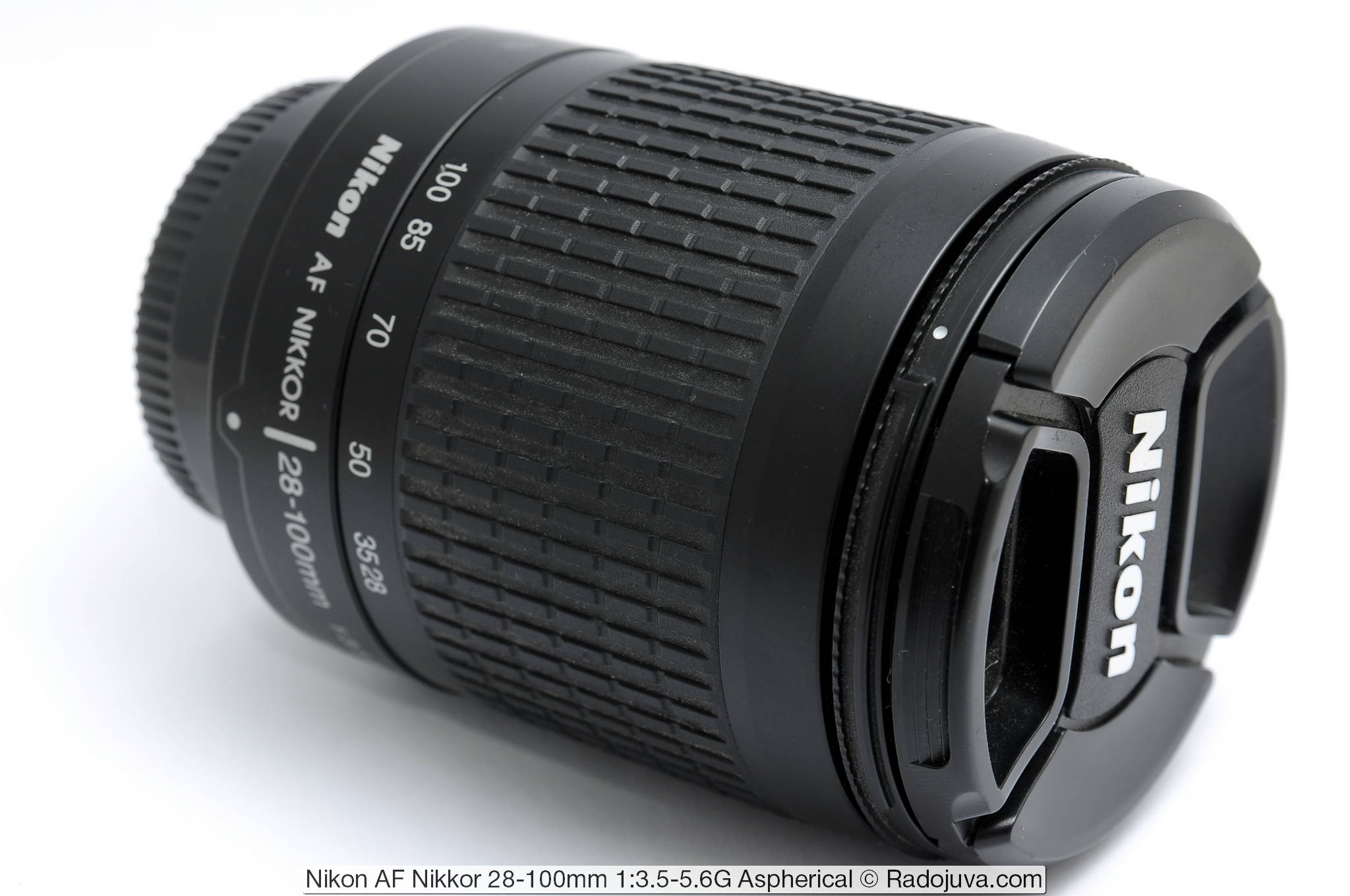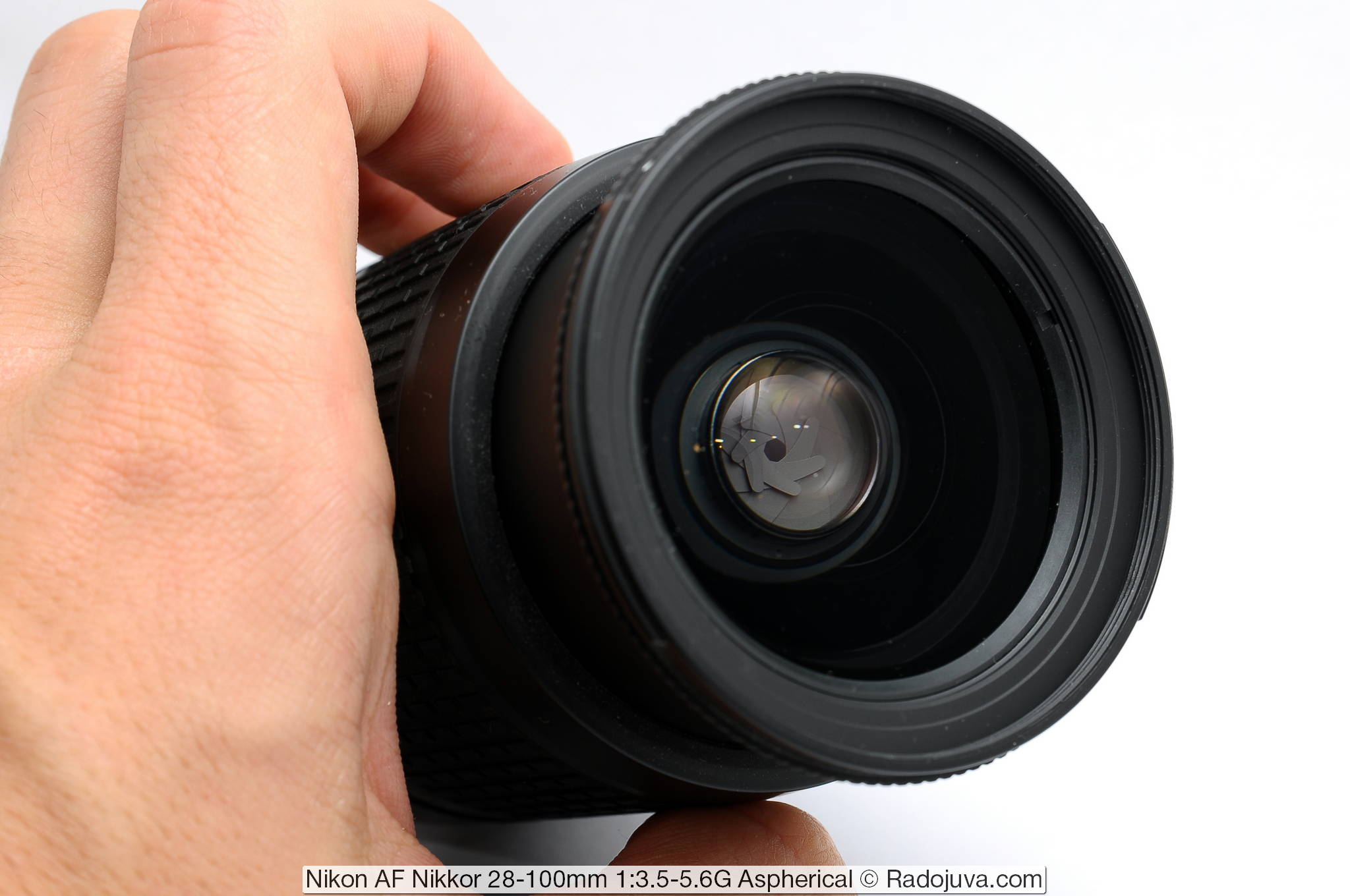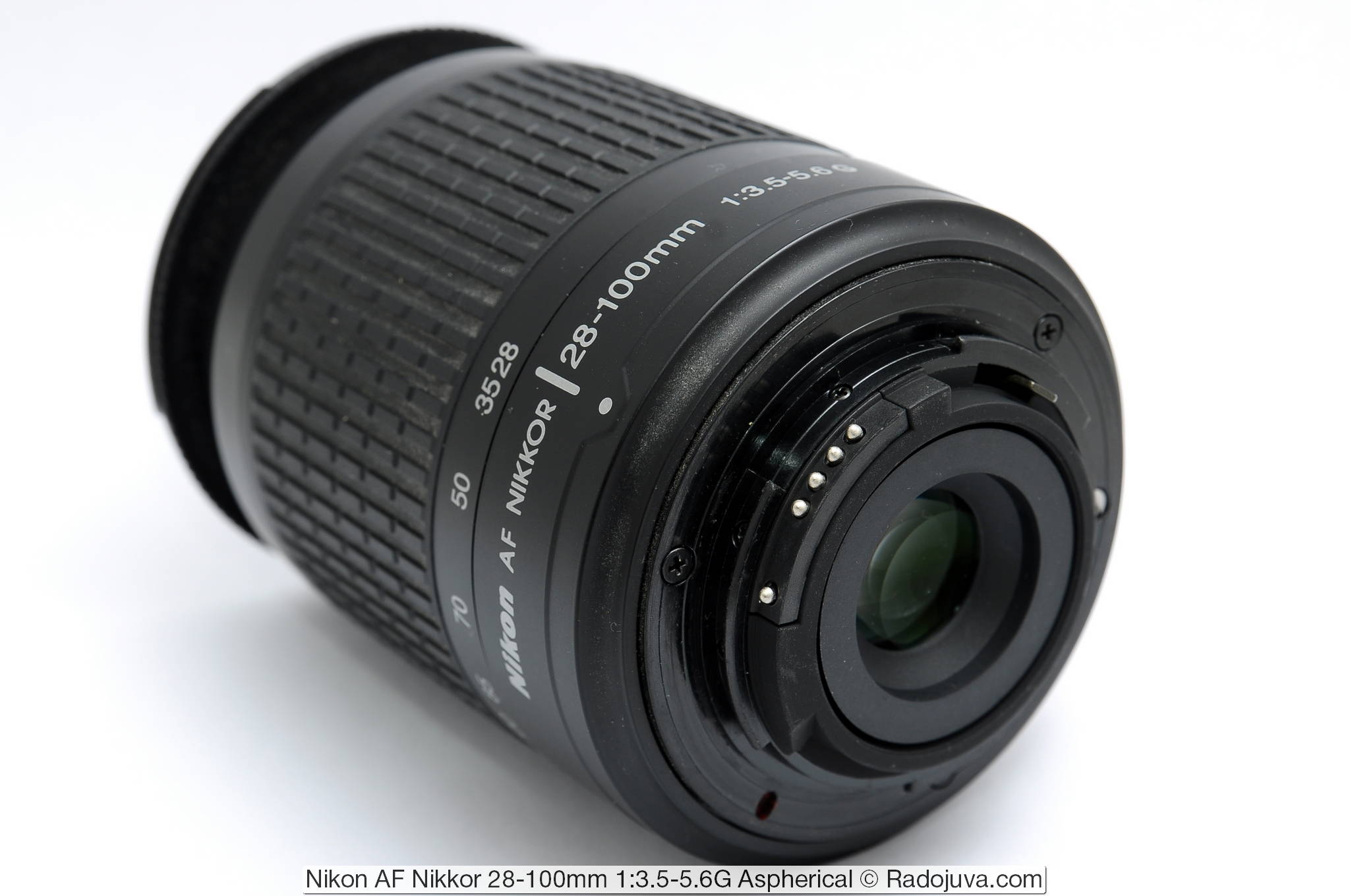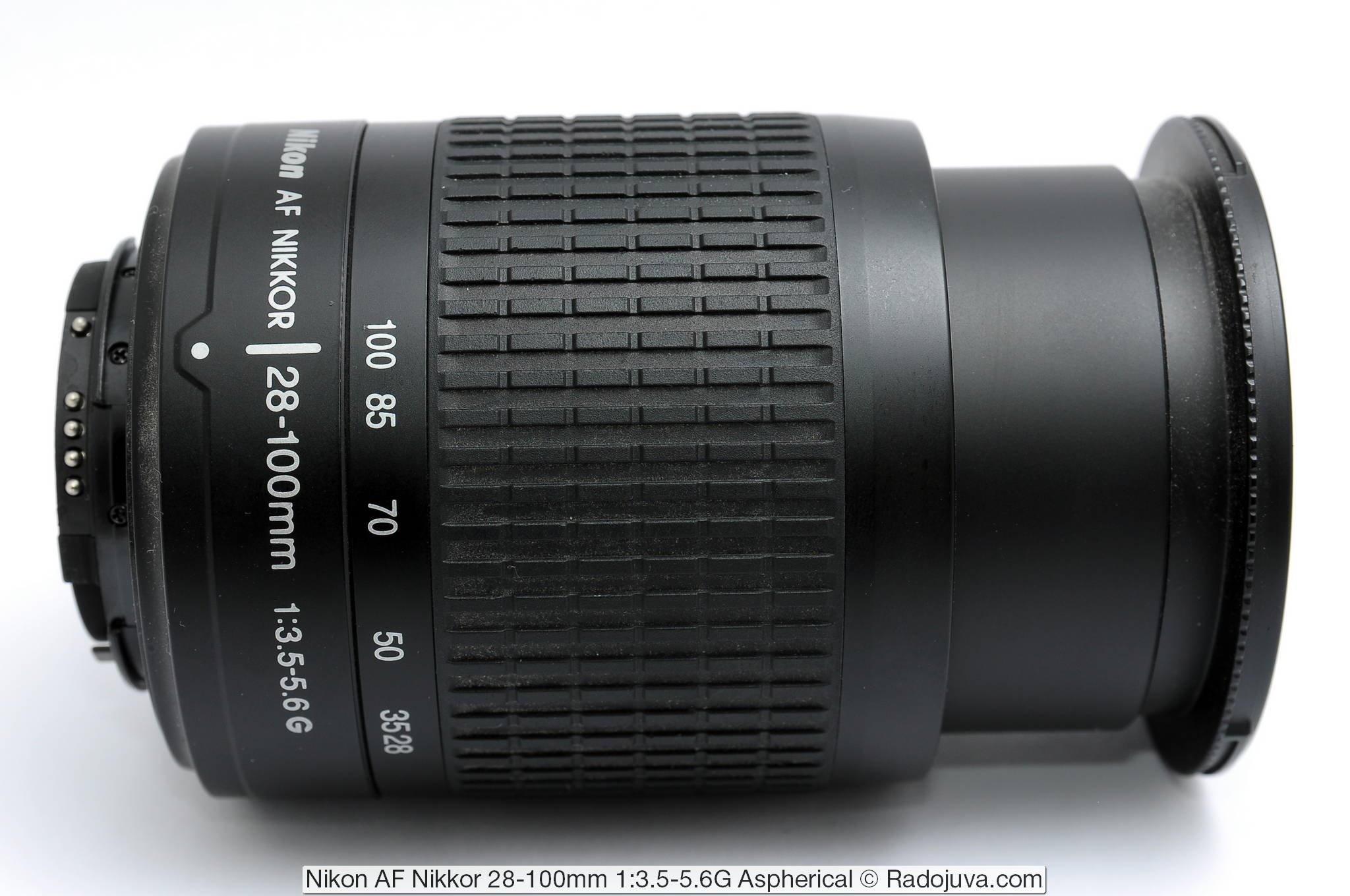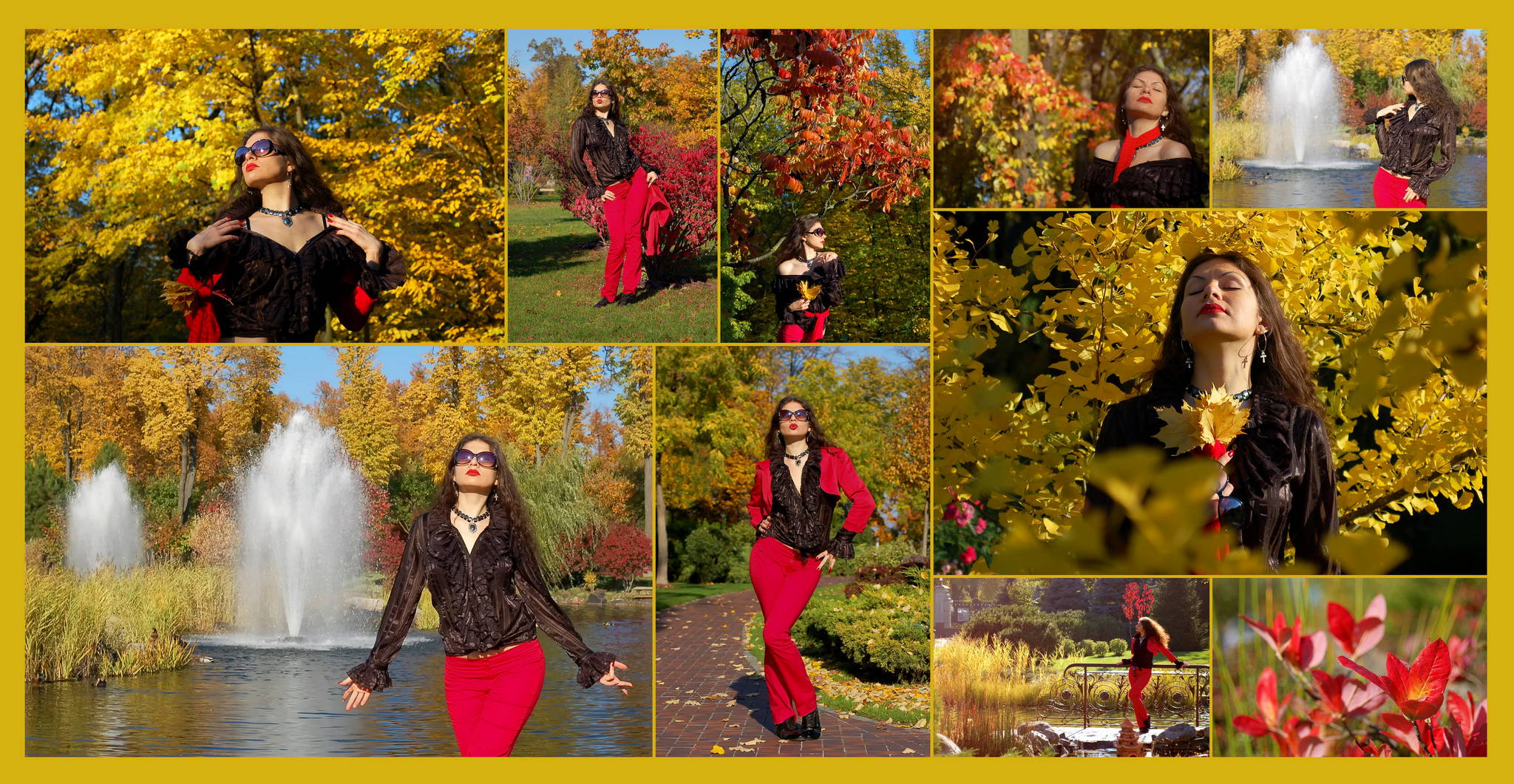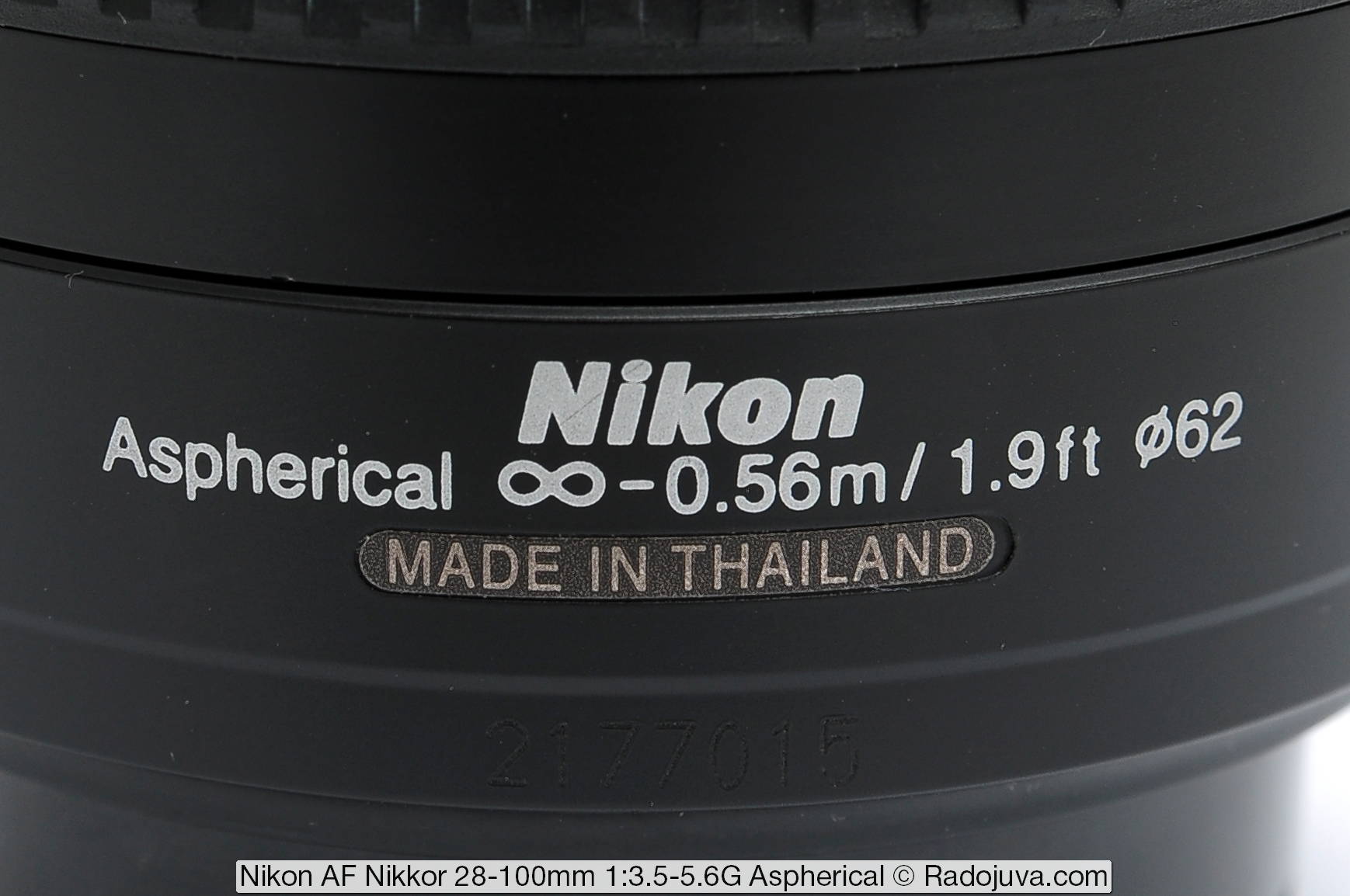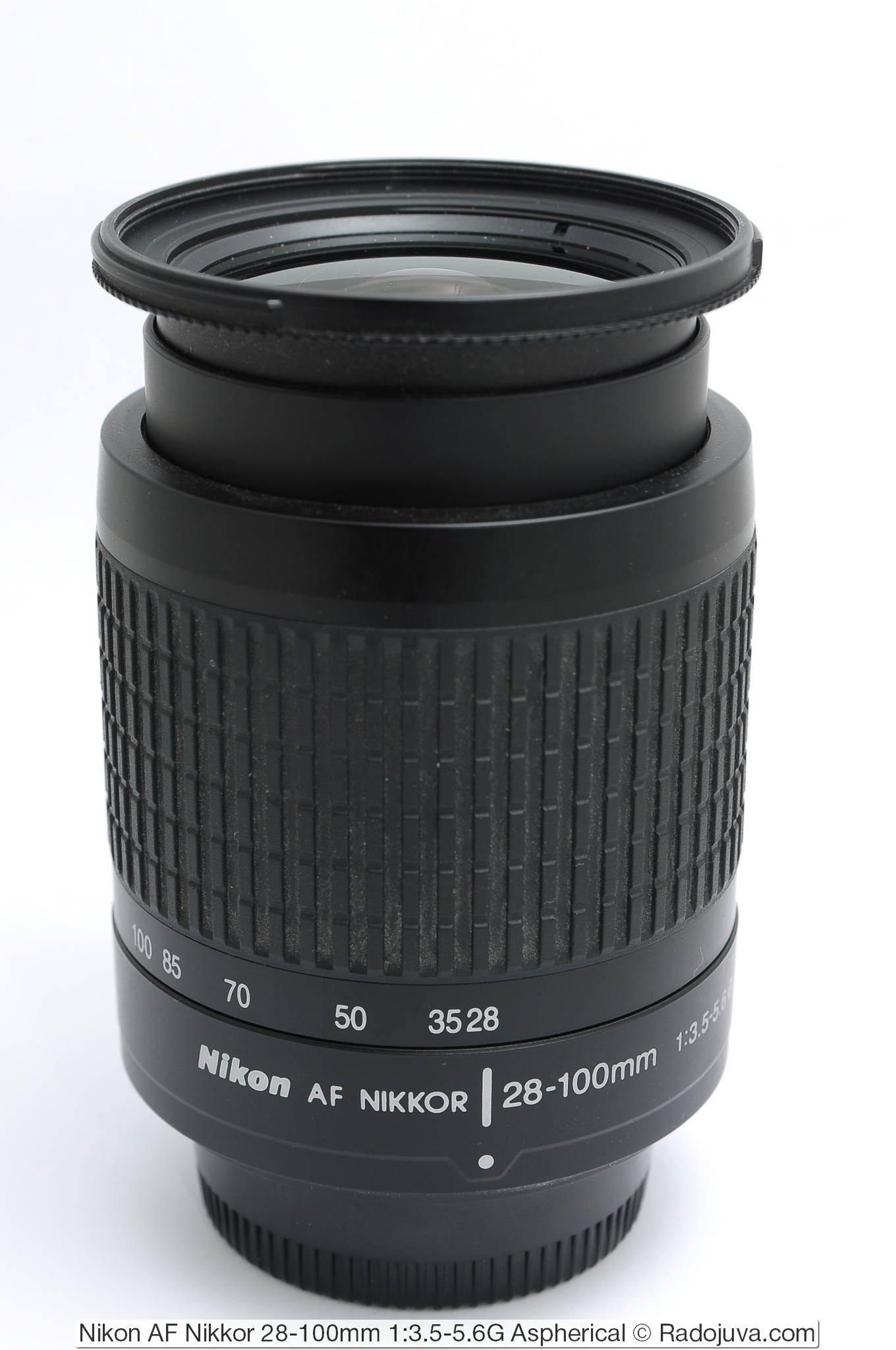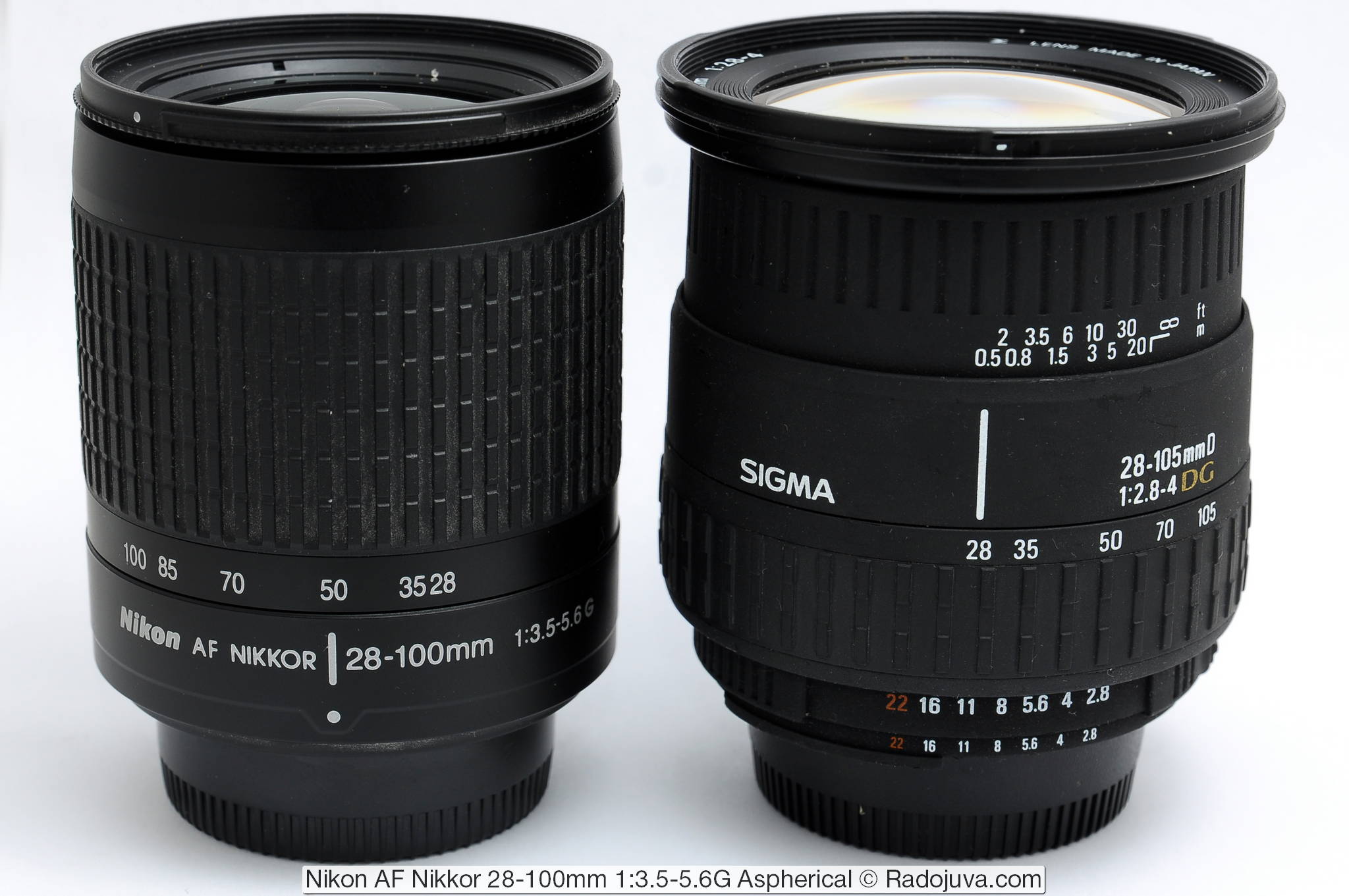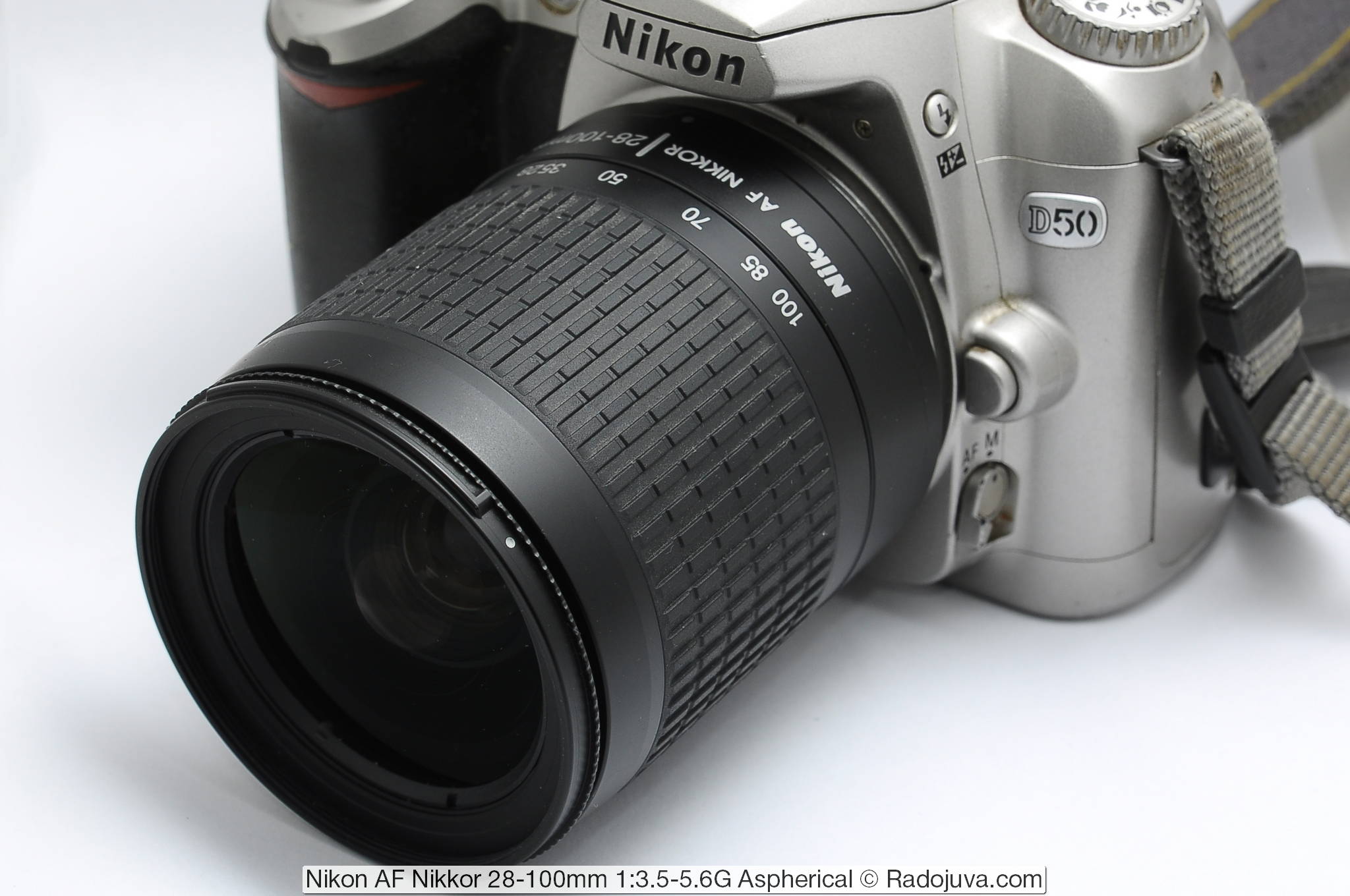00.37.43 Review of Nikon AF Nikkor 28-100mm 1: 3.5-5.6G Aspherical | ||||||||||||||||||||||||||||||||
| Review Instance Name | Lettering near the front lens: Nikon AF Nikkor 28-100mm 1: 3.5-5.6G, Nikon Aspherical ∞-0.56m / 1.9ft Made in Thailand ø62 |
| Basic properties |
|
| Front Filter Diameter | 62 mm |
| Focal length | 28-100 mm, EGF for Nikon DX cameras is 42-150 mm |
| Zoom ratio | 3,6 x |
| Designed by | for film cameras, although digital SLR cameras already existed at that time |
| Number of aperture blades | 7 rounded petals, form a fairly even hole on slightly covered diaphragms |
| Tags | Focal lengths for 28, 35, 50, 70, 85, 100 mm, bayonet mount mark, hood mount mark |
| Diaphragm |
|
| MDF (minimum focusing distance) | 0.56 m by 100 mm, the maximum magnification ratio is 1: 4.8 |
| The weight | November 245, XNUMX |
| Optical design | 8 elements in 6 groups.
|
| Lens hood | bayonet model HB-27 |
| Manufacturer country | Made in Thailand (Thailand) |
| Period | Around February 2002 to 2005 |
| Price | Prices for modern Nikon universal lenses are available see here. |
Nikon 28-100 / 3.5-5.6G uses aspherical optics. Nikon’s first lens using such hybrid aspherical elements was an old man Nikon AF Nikkor 28-70mm 1: 3.5-4.5 (MKI)submitted back in June 1991.
Nikon AF Nikkor 28-100mm 1: 3.5-5.6G Aspherical
Strange AF G Lenses
Usually old Nikon Nikkor autofocus lenses are AF / D, AF-I/D or AF-S / G. Variants AF-S / D and AF / G are extremely rare. I know only a few lenses that do not have an aperture ring (G) and at the same time do not have a built-in focus motor (AF):
- Nikon 10.5mm 1: 2.8G af Fisheye nikkor ed DX
- Nikon 28-80mm 1:3.3-5.6G af Nikkor (MKIII version)
- Nikon 28-100mm 1:3.5-5.6G af Nikkor
- Nikon 28-200mm 1:3.5-5.6G af ED IF Aspherical Nikkor
- Nikon 70-300mm 1:4-5.6G AF Nikkor
Nikon AF Nikkor 28-100mm 1: 3.5-5.6G Aspherical
Assembly
The lens is very simple - almost all of plastic, including the mount. The case design resembles a model Nikon 28-80mm 1: 3.3-5.6G AF Nikkor (MKIII), which, incidentally, was also supplied in black or silver versions of the case. But such a simplified case design made Nikon 28-100 / 3.5-5.6G very light.
The focus ring is combined with a retractable frame of the case, plastic, very, very narrow. The retractable frame of the body (trunk) consists of 2 plastic parts.
The zoom ring is large, rubberized, it is convenient to use. During a change in focal length, the trunk of the lens moves in a wave-like fashion: decreases from 28 to 50 mm and again lengthens from 50 to 100 mm, this behavior is characteristic of other similar lenses. Nikon's most compact sizes 28-100 / 3.5-5.6G are available at 50 mm focal length and during focusing to infinity.
When changing the focal length, the rear lens moves in the middle of the lens body like a pump - it draws in and pushes out air. This behavior of the rear lens is called 'vacuum cleaner effect', which can increase the amount of dust that accumulates in the camera.
The Nikon 28-100 / 3.5-5.6G lens mount, mounted in tiny slots near the focus ring.
The diaphragm uses 7 rounded blades and forms a fairly even hole at apertures up to f / 10, if you close the aperture harder - the shape of the hole will resemble a polygon.
Nikon AF Nikkor 28-100mm 1: 3.5-5.6G Aspherical
Focusing
Autofocus speed is high. The lens travel time from infinity to MDF and vice versa is about the same as the TOP professional lens Nikon N AF-S Nikkor 24-70mm 1: 2.8G ED NanoCrystalCoat SWM IF Aspherica. During Focus Tracking AF-C Refocusing delay is minimal, similar to some professional reportage lenses. I want to emphasize and recall that the lack of a built-in focusing motor in the general case does not affect the focusing speed. Focus speed with non-motorized lenses is most dependent on the lens model and slightly dependent on the camera used.
During focusing, the front lens and the frame for filters spin and drive forward. When changing the focal length, the front lens does not rotate.
The focus ring is narrow and uncomfortable. it thinnest focus ringI've ever met. Its thickness is about 1 mm. Even a more primitive lens Nikon AF Nikkor 28-80mm 1: 3.3-5.6G (MKIII) the corrugated edging of the focus ring is thicker. The focus ring rotates 90 degrees. The stroke of the ring is smooth. The minimum focusing distance is 0.56 m. The maximum magnification ratio is achieved by 100 mm of focal length and is 1: 4.8.
When used on a camera Nikon D90 (with unpretentious Multi-CAM 1000 focusing system) and Nikon D50 (with unpretentious Multi-CAM 900 focusing system) behaves well, rarely makes a mistake in focusing. On camera Nikon D90 I checked the presence of the back and focus front at different focusing distances and different values of the focal length (infinity and MDF as well). Pictures taken using the Live View mode (which does not suffer from back / front focus) were used as a measure. Focusing accuracy using phase sensors completely coincided with the Live View mode.
It's important: auto focus with this lens is available only when using him on cameras with built-in motor focusing.
Exact list Nikon DSLR cameras with a built-in focus motor, on which this lens will focus automatically:
- D1, D1h, D1x, D2x, D2xs, D2h, D2hs
- D3, D3x, D3s, D4, D4s, D5, D6
- Df
- D50, D70, D70s, D80, D90
- D7000, D7100, D7200, D7500
- D100, D200, D300, D300s, D500
- D600, D610, D750, D780
- D700, D800, D800E, D810, D810a, D850
- Fujifilm FinePix S1 Pro, S2 Pro, S3 Pro, S3 Pro UVIR, S5 Pro, IS Pro
- Kodak DCS PRO 14n, DCS Pro SLR / n
Exact list Nikon DSLR cameras without a built-in focus motor, on which this lens will not focus automatically:
Only auto focus and sound confirmation of focus will not work with these cameras, all other important functions, such as automatic exposure metering and automatic iris control, will work well.
You will find a lot of useful information on the types of cameras and lenses Nikon here.
Focus Features:
- Nikon 28-100 / 3.5-5.6G does not have a focus mode switch. To translate the lens into manual focus on cameras with motor For focusing, use the focus mode switching lever located near the camera mount. For cameras without motor Only manual focus mode will always be available for focusing.
- During focusing, the focus ring rotates and must not be touched.
- Focus speed may vary slightly from the camera used. This issue has been considered. here.
- During focusing, the lens and camera are quite noisy. Noise is heard even during manual focus.
- There is a small effect of 'Focus Breathing' (changing the viewing angle during focusing). Most pronounced at 28 mm focal length, 100 mm focal length 'Focus Breathing' is almost completely absent. For budget lenses, this is a very good indicator.
- When changing the focal length, focusing is almost not lost.
- There are no additional tags for the type of focus distance scale or tags for working in the infrared spectrum.
- Unknown compatibility with teleconverters.
- Nikon 28-100 / 3.5-5.6G does not have hard stop (hard infinity mechanical stop) which allows you to accurately and quickly focus the lens at infinity under any external conditions.
Nikon AF Nikkor 28-100mm 1: 3.5-5.6G Aspherical
Sample Photos
Examples of photos on this lens can be viewed in my gallery here.
Sample photos on Nikon D50. Click to enlarge.
Sample photos on Nikon D50. Click to enlarge.
You can download the original photos. at this link.
Once upon a time, I read the report of a professional photographer who filmed a very important sporting event with Nikon's first CZK - Nikon D1. According to him, at the end of the competition, he almost ran out of memory on memory cards to continue shooting. To finish shooting, the photographer turned on the lowest image quality, so that as many photos as possible could fit into the remaining free space on the memory card. As a result, the magazine, for which the photographer was filming, chose a photo taken with the lowest image quality, while paying him a decent fee.
When shooting on the Nikon 28-100 / 3.5-5.6G, I encountered a similar situation. Unfortunately Nikon D50 supports memory cards up to 4 GB only (usually only 2 GB cards can be found that work with this camera without problems). The most interesting photographs during one of my shooting began to turn out when there was almost no free space left on the memory card. As a result, the most interesting pictures turned out just in the 'JPEG' 'BASIC' 'S' (the smallest size 1504 X 1000 pixels and the strongest compression). After this survey, I was once again convinced that very often the number of megapixels and the level of compression (quality of data processing) have almost no effect on the final product.
My experience
Cheap, simple and not capricious full-time station wagon for all occasions. Despite the fact that the Nikon 28-100 / 3.5-5.6G is optically slightly worse Nikon 28-80but liked more because of the longer focal length.
Nikon AF Nikkor 28-100mm 1: 3.5-5.6G Aspherical and SIGMA ZOOM 28-105mm D 1: 2.8-4 DG
List of all Nikon FX 28-XXX autofocus lenses:
- Nikon 28-70 mm 1: 2.8D AF-S Nikkor ED SWM (black / white)
- Nikon 28-70 mm 1: 3.5-4.5 AF Nikkor (MKI)
- Nikon 28-70 mm 1: 3.5-4.5D AF Nikkor (MKII)
- Nikon 28-80 mm 1: 3.5-5.6D AF Nikkor (MKI)
- Nikon 28-80 mm 1: 3.5-5.6D AF Nikkor (MKII)
- Nikon 28-80 mm 1: 3.3-5.6G AF Nikkor (MKIII, black / silver)
- Nikon 28-85 mm 1: 3.5-4.5 AF Nikkor (MKI)
- Nikon 28-85 mm 1: 3.5-4.5 AF Nikkor (MKII)
- Nikon 28-100 mm 1: 3.5-5.6G AF Nikkor (black / silver)
- Nikon 28-105 mm 1: 3.5-4.5D AF Nikkor (Japan / China)
- Nikon 28-200 mm 1: 3.5-5.6D AF Nikkor (Japan / China, Black / Silver)
- Nikon 28-200 mm 1: 3.5-5.6G ED IF Aspherical AF Nikkor (Japan / Thailand)
- Nikon 28-300 mm 1: 3.5-5.6G AF-S Nikkor ED SWM VR IF Aspherical
The catalog of modern universal lenses for Nikon can be see here.
Comments on this post do not require registration. Anyone can leave a comment. A wide variety of photographic equipment can be found on AliExpress, Amazon и B&H Photo.
Nikon AF Nikkor 28-100mm 1: 3.5-5.6G Aspherical on the camera Nikon D50 silver
Results
Nikon 28-100 / 3.5-5.6G is a balanced super budget versatile lens for full-frame cameras. It may still surprise.
- very low cost, one of the cheapest AF lenses in the aftermarket
- light weight
- suitable for full-length cameras
- a very convenient set of focal lengths for full-format cameras
- fast auto focus
- trunk self-extension is absent, zoom ring is rubberized, bayonet type hood
- moderate distortion and moderate chromatic aberrationlow vignetting on Nikon DX cameras
- small MDF with a good maximum magnification ratio
- no focus shift
- weak effect 'Focus Breathing'
- fairly flat discs of blur on the values aperture up to f / 10
- confident sharpness of 28 mm and F / 3.5 in the center of the frame, excellent sharpness on covered apertures in the wide angle range
Disadvantages:
- low aperture, uneven increase in the number F with increasing focal length
- plastic mount
- inconvenient manual focus, record-breaking narrow focus ring
- while changing the focal length, the rear lens is movable
- while changing the focal length, the trunk of the lens moves in waves, there may be psychological discomfort in using
- insufficiently rounded aperture blades that, at F numbers greater than 10, create a hole in the shape of a 7-gon
- absence inboard motor focusing, which limits its use with amateur Nikon DX series cameras
- noisy auto focus due to the lack of a modern quiet focus motor
- rotation of the front lens and the frame for the filters during focusing, in addition, the trunk of the lens also goes forward (inconvenience when using polarists and other specific filters)
- unpleasant bokeh
- tangible drop in sharpness in the television range
- palpable spherical aberrations in the television range
- poor resistance to back / side light under certain conditions
Material prepared Arkady Shapoval... Look for me on Youtube | Facebook | Instagram | Twitter.
28.10.2017 | News Email | VK | FB | Google+ | Twitter | Youtube
| Total comments: 0 | |
